Nathaniel Folsom had a trading post at Pigeon Roost, like his
brothers Ebenezer and Edmund, married into the Choctaw tribe. Following Choctaw custom, he married two sisters,
(I-Ah-Ne-Cha and Ai-Ne-Chi-Hoyo) nieces of the chief of the Northeastern district of the Choctaws. That is,
this was the custom if the man could afford to have a large family. The Choctaws felt that by having two
wives–sisters–there would be no jealousy and there would always be someone to look after the children. By his
two wives, Nathaniel Folsom had a large number of children–twenty four according to some authorities and
twenty-five by others. |

Next stop Pigeon Roost. |

Pigeon Roost through the trees and thunder storm. |

We are on the bridge on highway 82. Looking back on Pigeon Roost. |

After one of those isolated thunderstorm this creek is a banker. |

Chickasaw Agency stop. We parked here waiting for the isolated thunderstorm to pass. |
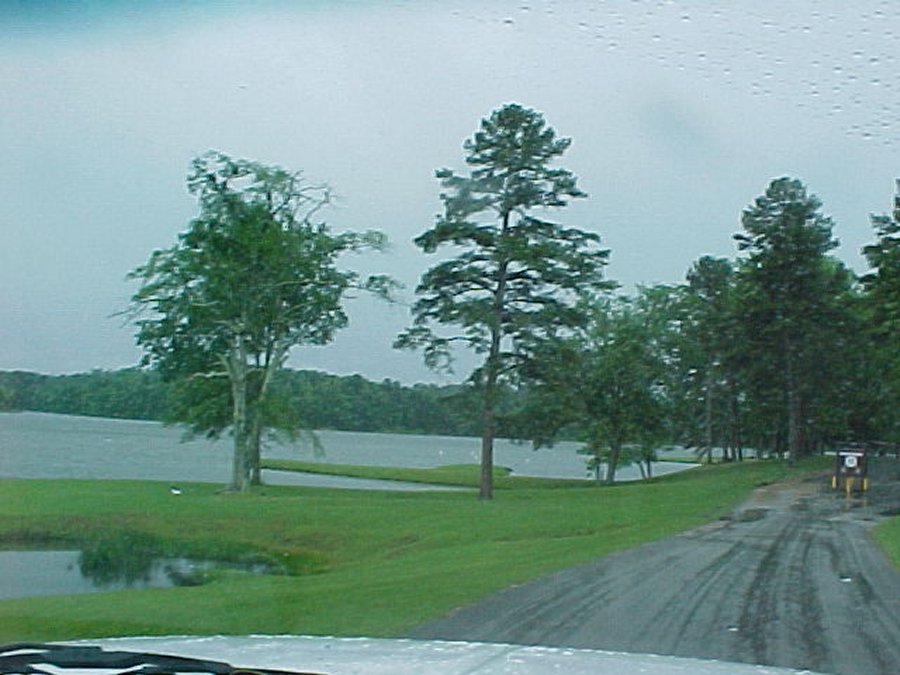
Davis Lake and campground. |
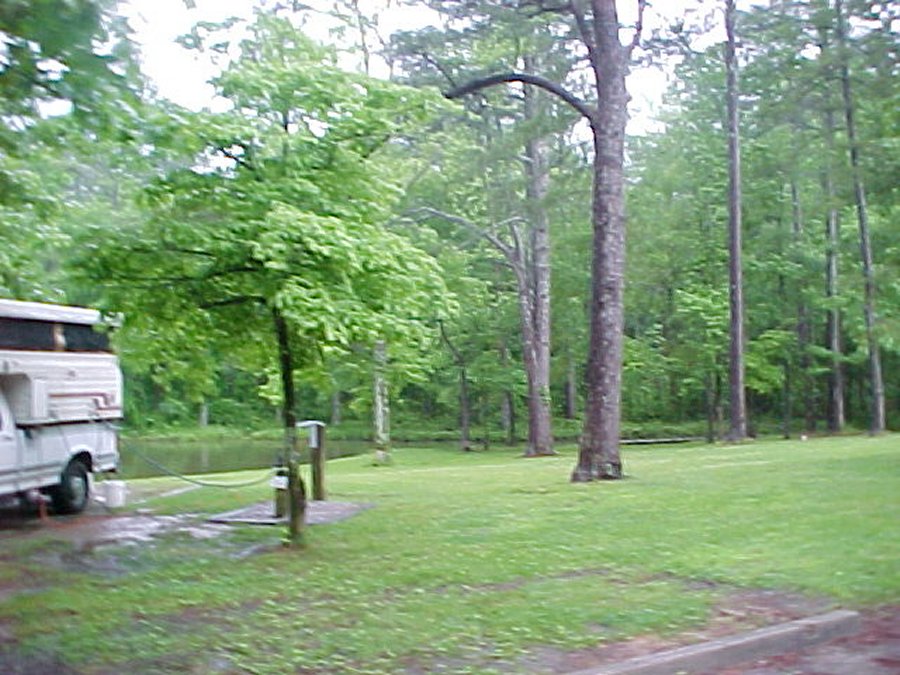
The RV spaces are a little wet. |
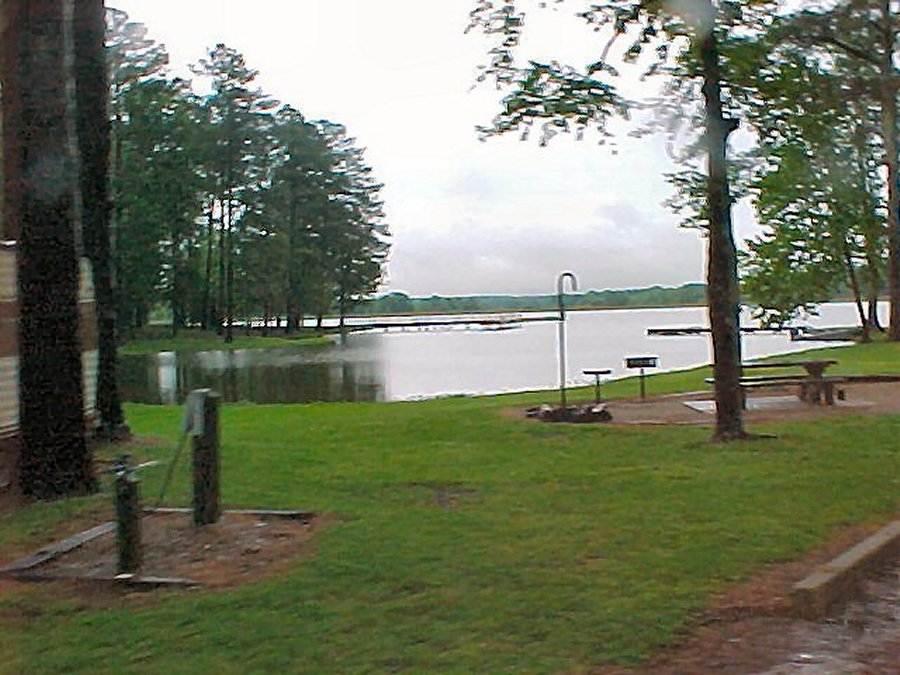
These sites look a little squishy, so we head into Tupelo. |
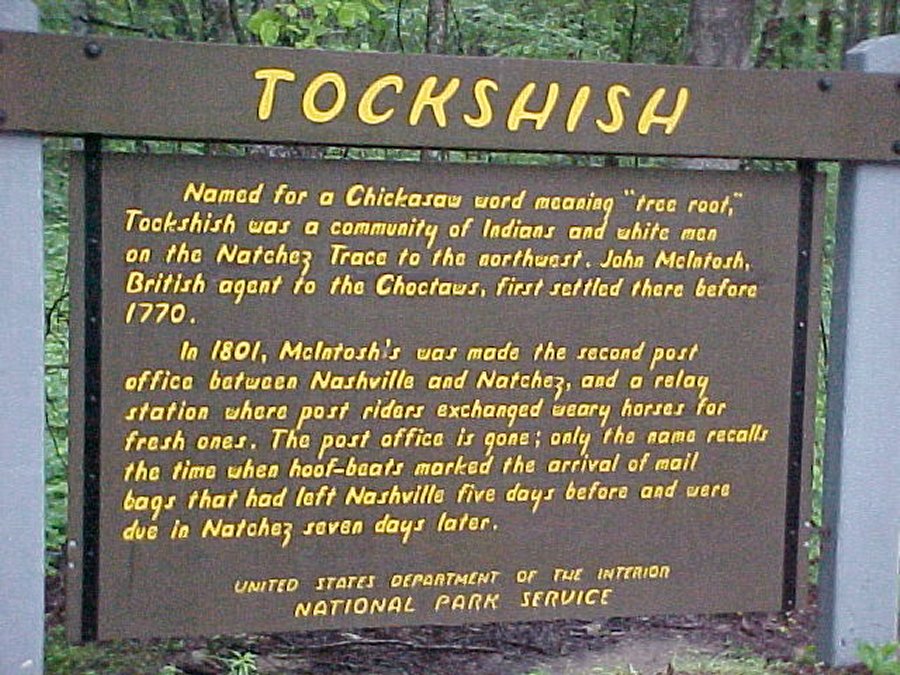
An Indian village named Tockshish in the Tombigbee National Forest. |
Westerly on the Natchez Trace stood an Indian village, Pontatock,
with its council house, which in the 1820s became the capitol of the Chickasaw Nation. The chiefs and the head
men met there to sign treaties or to establish tribal laws and policies. Each summer 2,000 or 3,000 Indians
camped nearby to receive an annual payment for lands they had sold to our Federal government. After the treaty
of 1832, the last land was surrendered. The council house disappeared but its memory remains here in the names
of a Mississippi county and town that went west with the Chickasaw as a county and village in Oklahoma. |
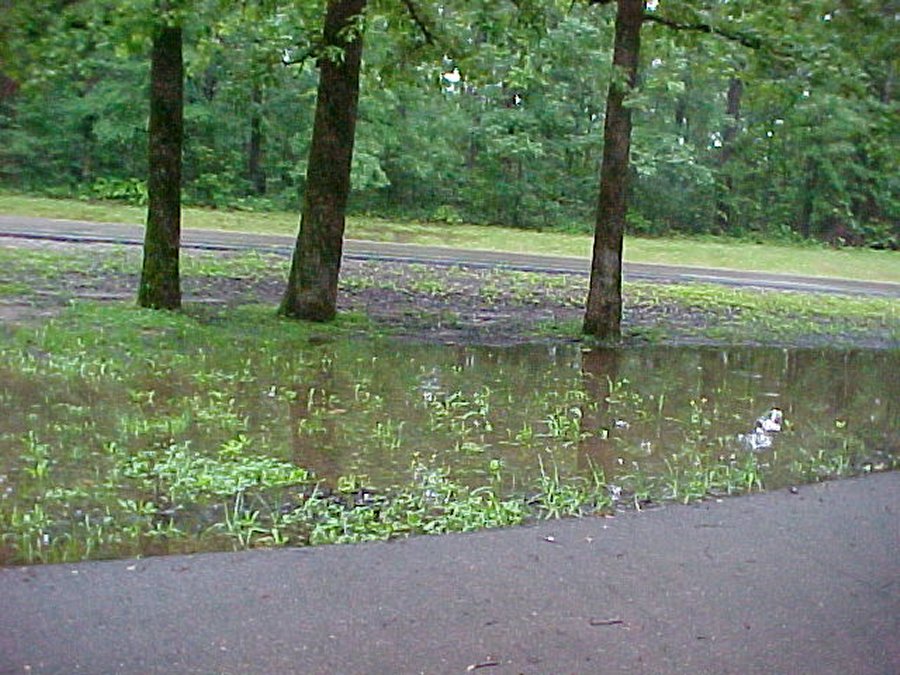
I hope the Tockshish Indian village was on higher ground than this. |
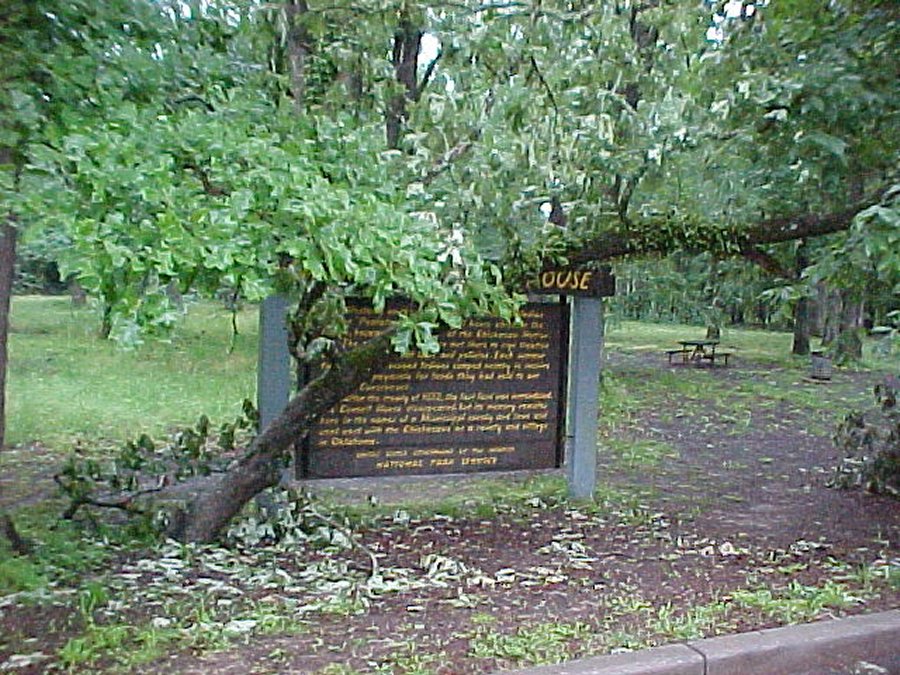
The tree blocks part of the Chicksaw Council House. |
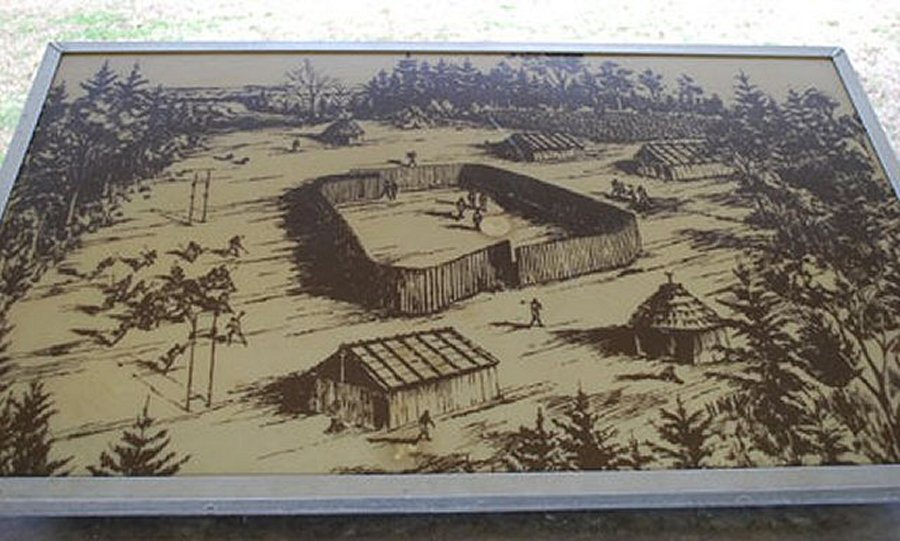
A typical Chickasaw village. |

Information on the Black Belt. |

area around the Black Belt Overlook. |

Lots of white flowers. |
The modern city of Tupelo stands upon ancient, hallowed ground.
When Spanish explorer Hernando De Soto passed through this area in 1540, he encountered an established
Chickasaw Indian civilization nestled in the wooded hills and valleys. The Chickasaws, who had a reputation as
fierce fighters, ultimately drove De Soto westward toward his discovery of the Mississippi River. |
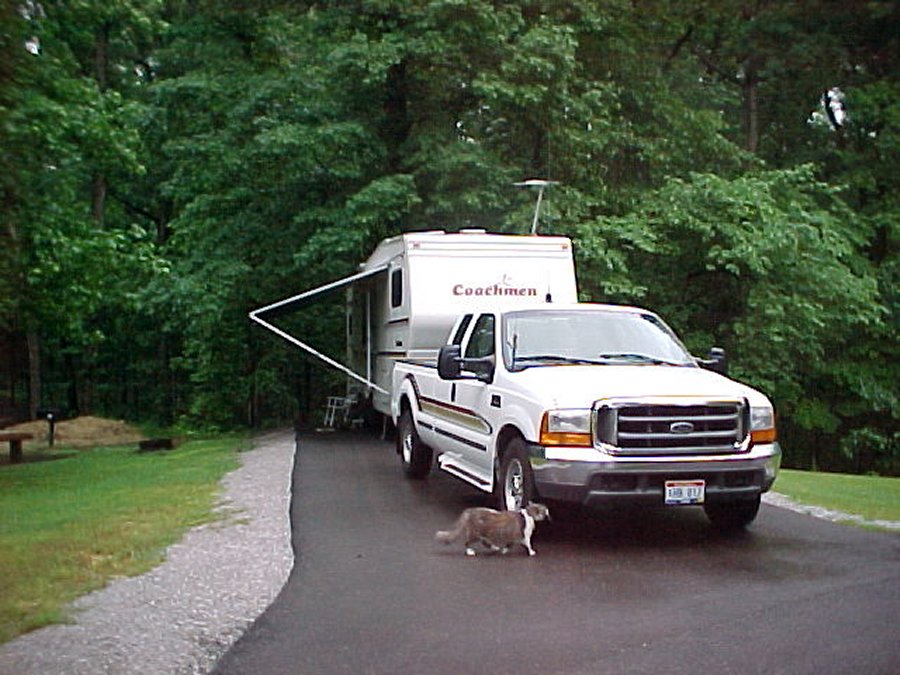
Our site in Tombigbee State Park. |
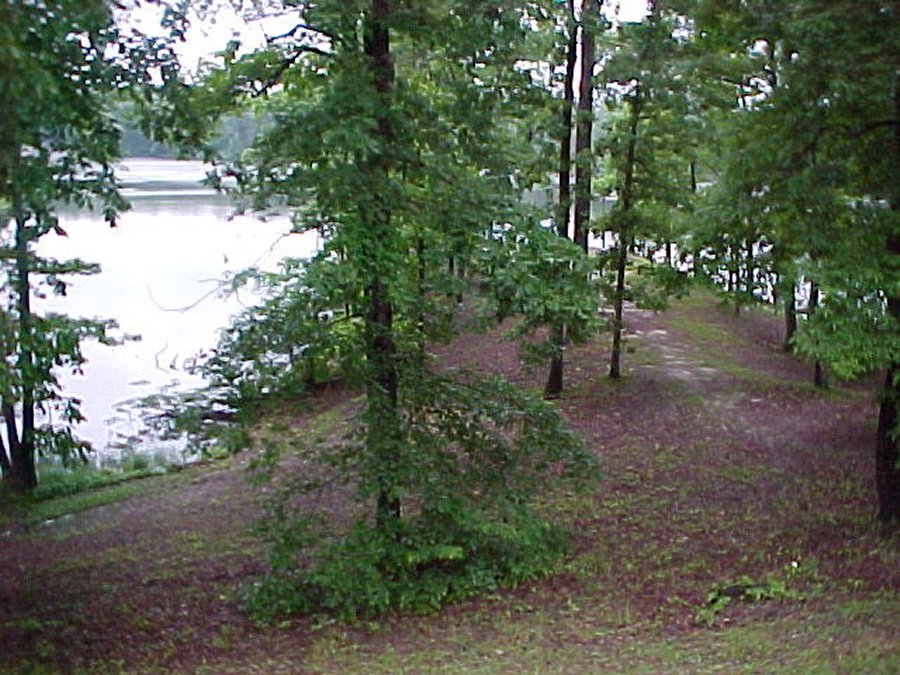
The lake at Tombigbee State Park. |

A Chicken (not a box) turtle we found on the road we stopped and moved it of the road. |
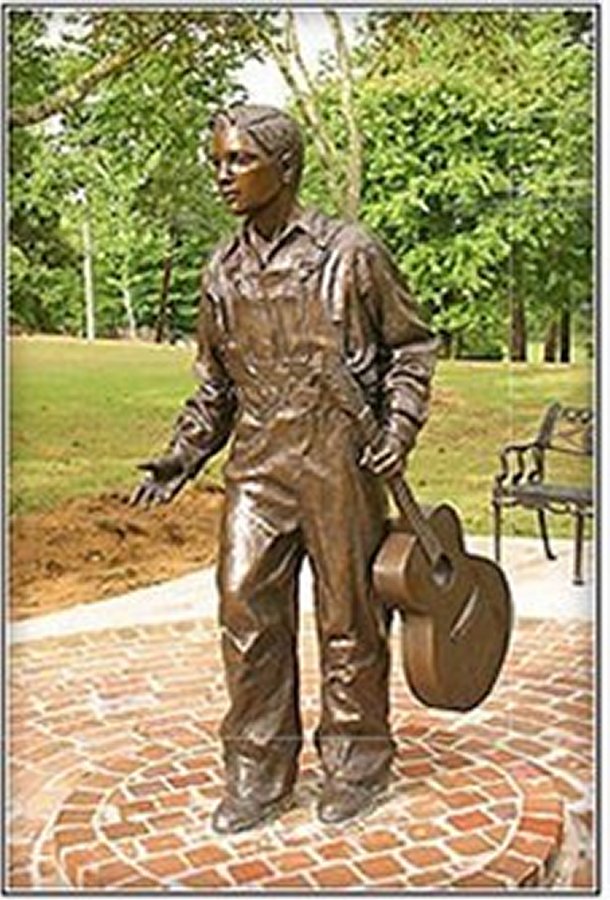
Bronze statue of Elvis at 13. |
Gladys always believed Elvis was an identical twin (his brother Jessie Garon died at birth) and raised Elvis to believe this as
well, which led him to comment throughout his life that he always felt emptiness in his life where his brother should have been. This trauma bonded Elvis and Gladys. Mother and
son were devoted to each another to the extreme. The Presleys were poor as any white Southerners could be. Vernon worked as a sharecropper, Gladys at the Tupelo Garment Co as
a machine operator. Vernon was not an ambitious man, considered lazy, and for a time spent 18 months at Parchman Penitentiary for cheque forgery. |
Elvis Presley birthplace: Tupelo was a dirt-poor town in the deep South. The sharecroppers and laborers, whites and blacks alike, all sought refuse from their misery through religion.
It was in church, Elvis first heard music, Gospel music, and this Southern-style expression in song would remain the strongest influence on Elvis' music till the very end.
Although pitifully poor, Elvis's mother saw to it that her only surviving child would have the best of what little money could buy. For his 10th birthday, she bought him a guitar.
At first little Elvis objected - he had wanted a cap gun. Maybe that's the reason in later life, when money was no object Elvis had a fascination and collected firearms. Later, with
the help of uncle Vester, Elvis learned to play the guitar, well enough to accompany himself singing OLD SHEP. A family friend, Mississippi Slim, encouraged Elvis' guitar playing
by teaching him additional chords - sharps and flats. According to Slim, Elvis was an attentive student, but was not a quick learner. |
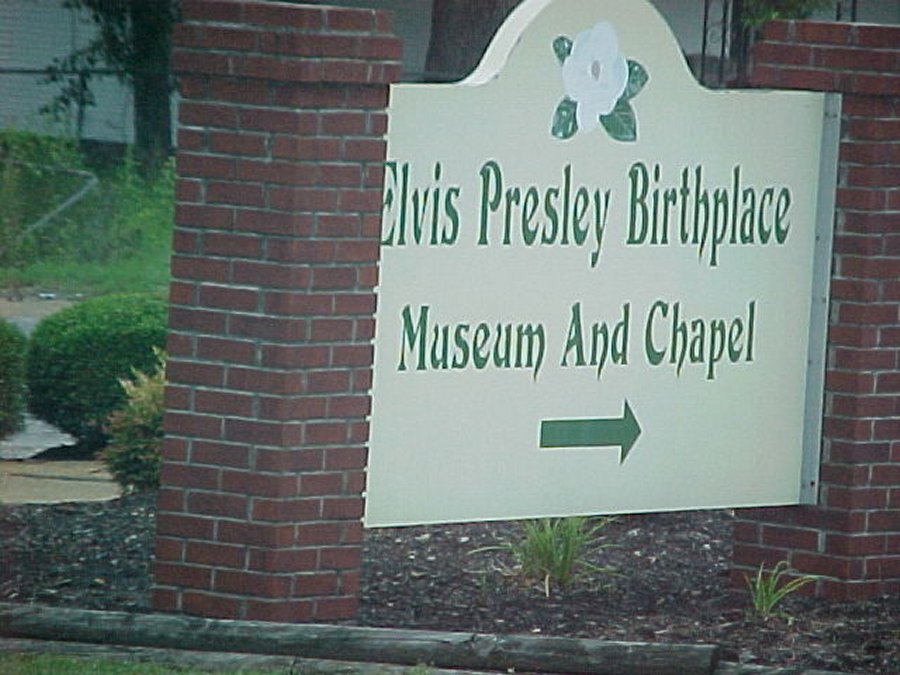
Tupelo is Elvis Presley birthplace. |
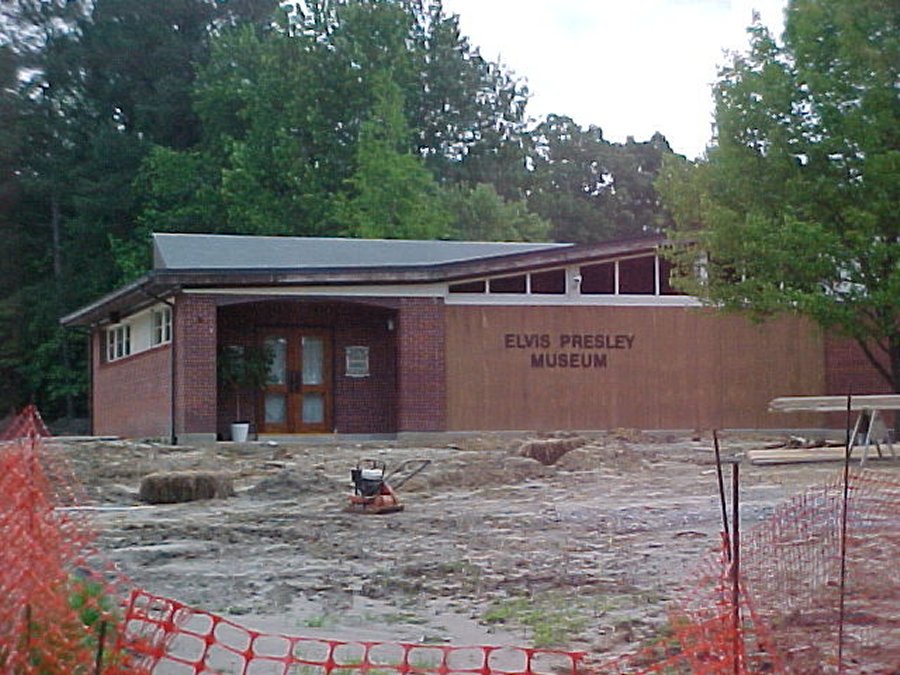
Mud and museum entrance being remodeled - we entered gift shop behind museum through a back door. |

Elvis's two room boyhood home. Looks like about a 300 square foot house. |

Nancy still enjoying the porch swing Elvis once used. |
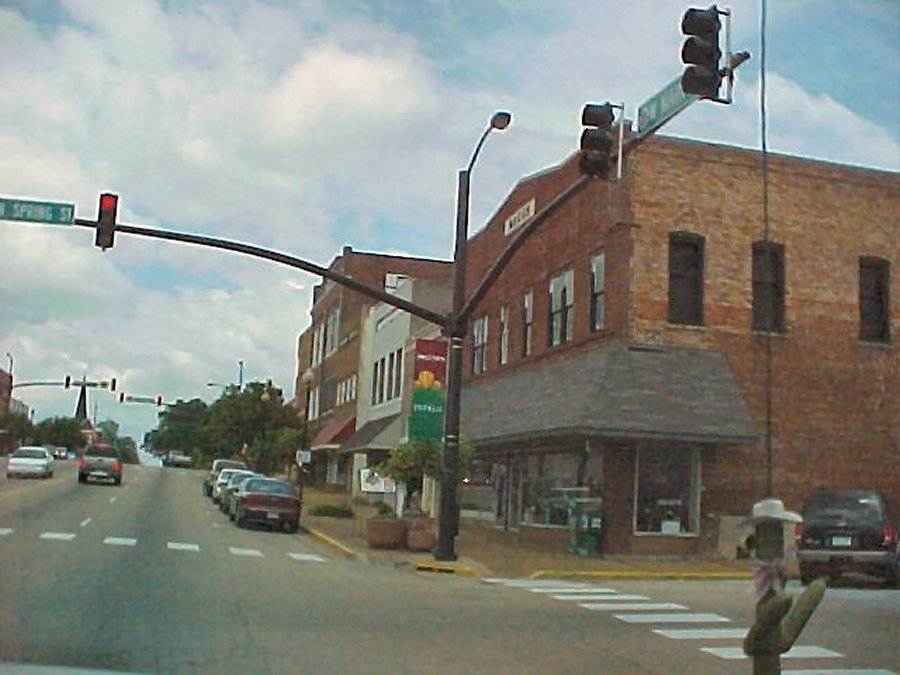
Downtown Tupelo. |

Beautiful antebellum houses in Tupelo. |
In 1736, at the height of the French and Indian War, a bloody battle erupted near Tupelo between the British-armed Chickasaws and the combined invading forces of the French
and the Choctaw Indians. Known as the Battle of Ackia, the engagement left the area in firm British control and contributed to the Crown's eventual domination of North America. From the earliest Indian settlement, the
Tupelo area was linked to the outside world via the now-historic Natchez Trace. The Trace was established by the Chickasaws as a route of commerce with the Natchez Indians to the south. Traveled by the British in the
18th century, the Trace increased in importance as settlers poured into the frontier.
The Civil War also left its mark upon the Tupelo area. The Battle of Tupelo, in mid-1864, pitted Union troops against Confederate cavalry bent on controlling railroad traffic supplying the Union campaign against Atlanta. |
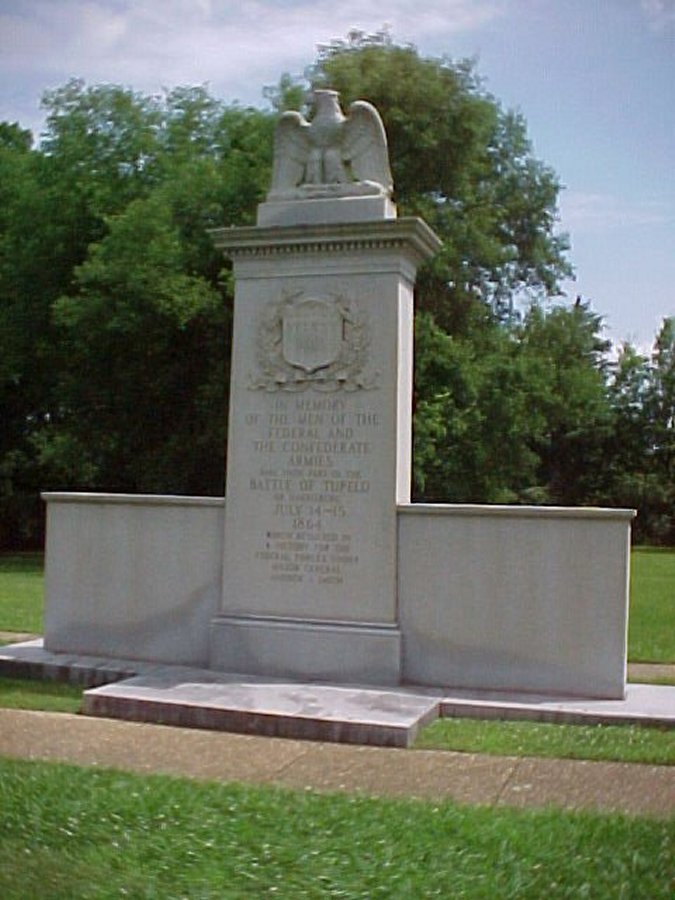
Center monument Tupelo National Battlefield park. |

Inscription of larger monument. |
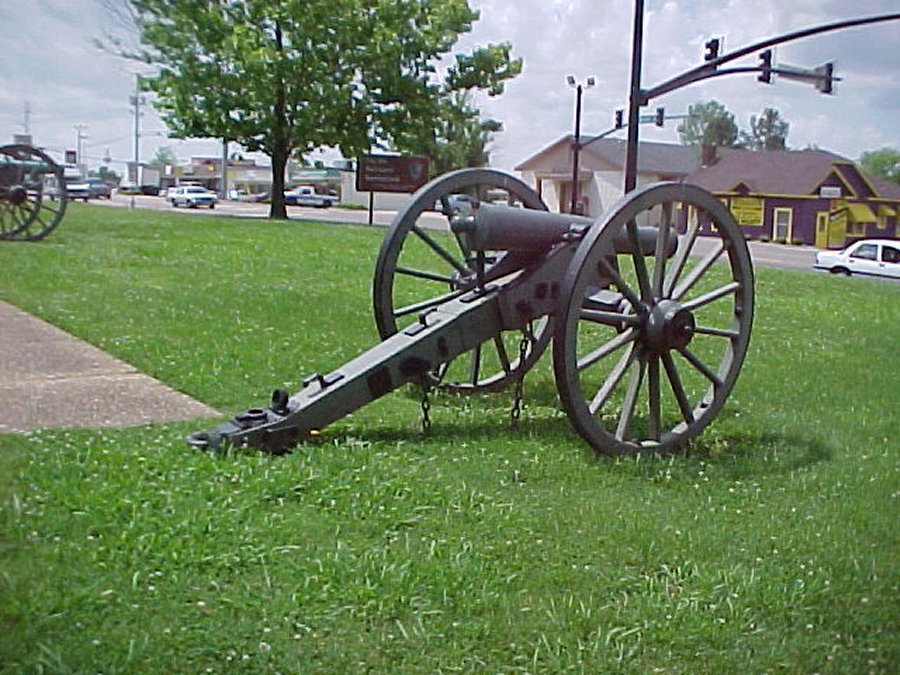
One of 2 cannon in the park. |
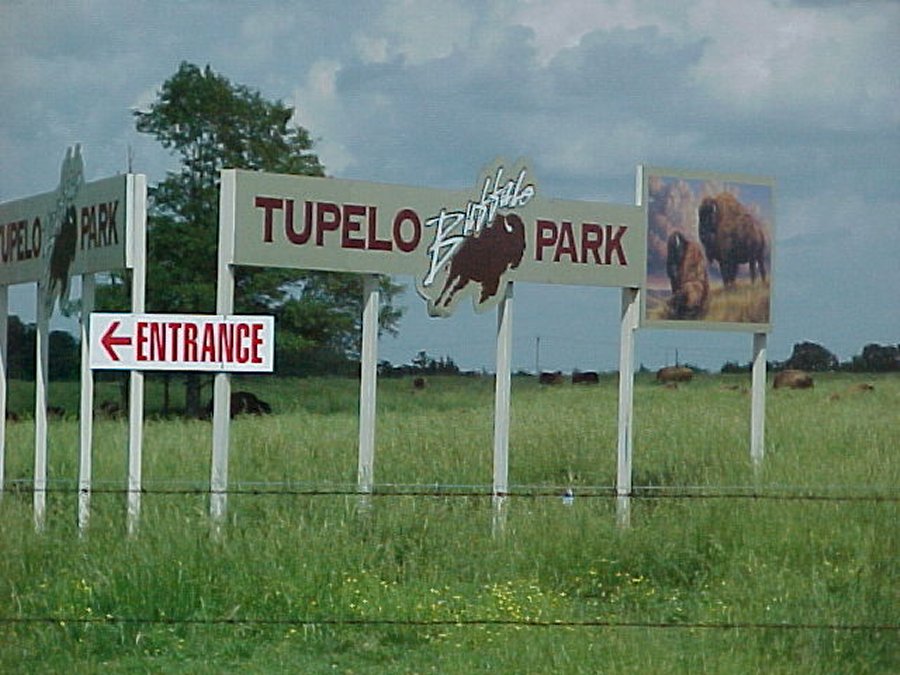
We visit the Tupelo buffalo Park. |
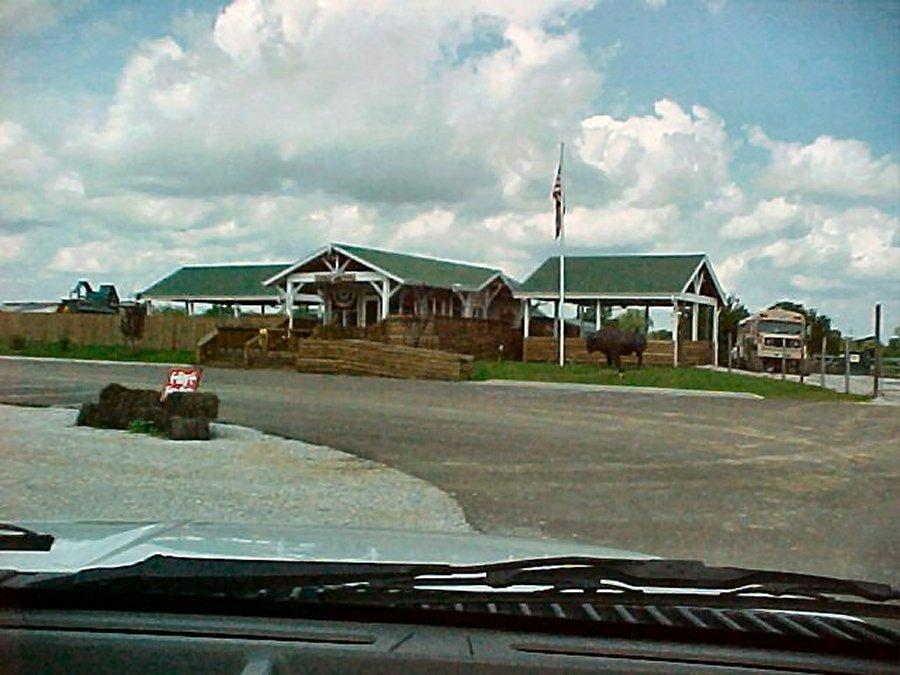
Entrance and parking lot of largest herd east of Mississippi. |

Pretty hot afternoon, buffalo are grazing under trees. |

They had a bunch of other wild animals including this Bengal tiger. |

A Couple of giraffes. |

We paid to go through their critter pens and take ride on big bus through pastures. |
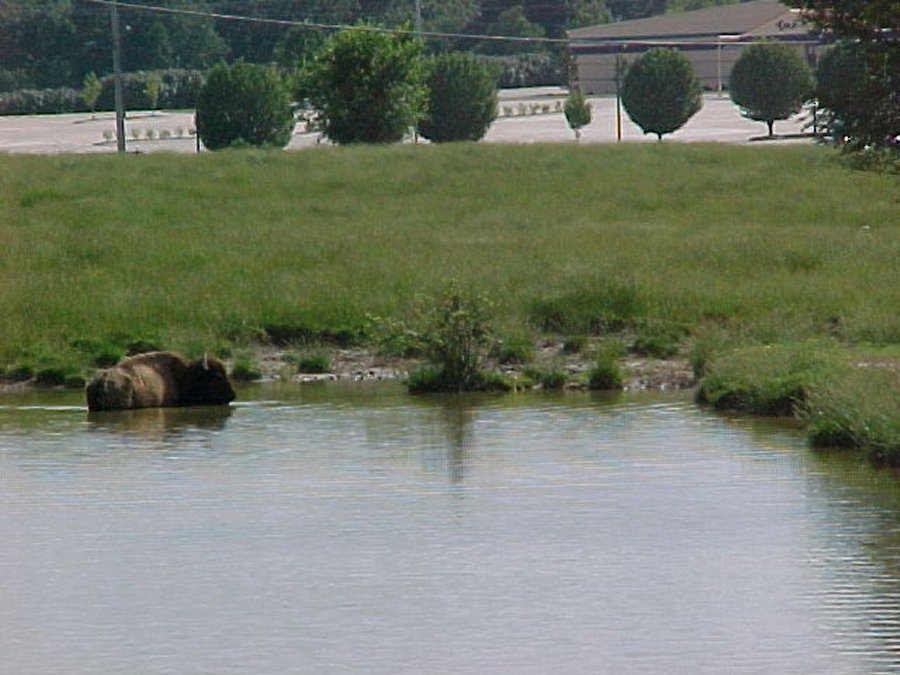
An American Buffalo in the water. |

A Water buffalo in the pond. |

Nancy has to pet Charlie the camel. He followed the tour bus around. |
![]()

![]()

![]()